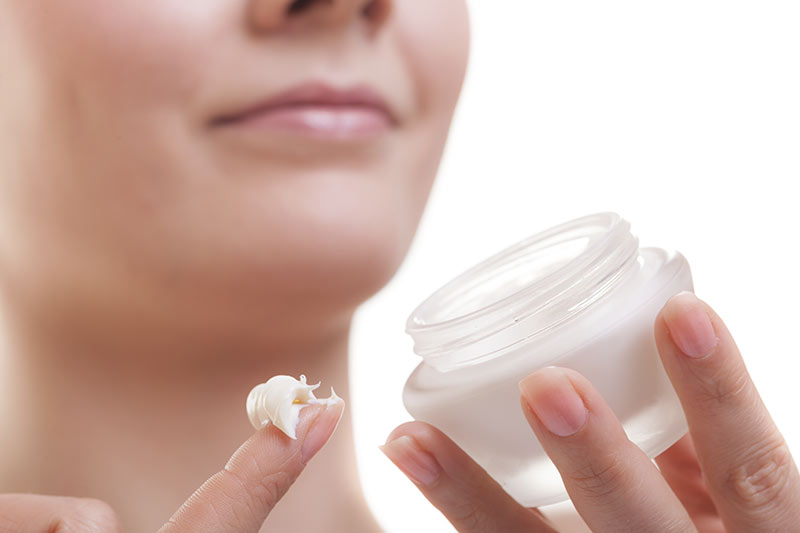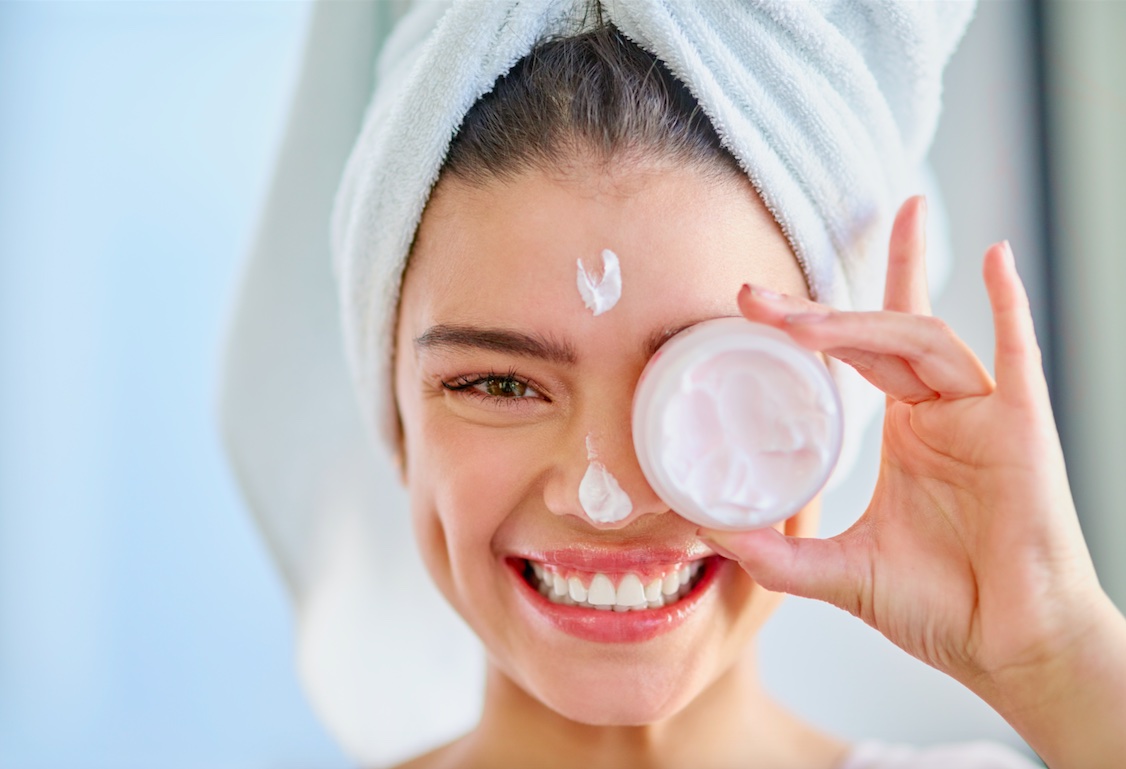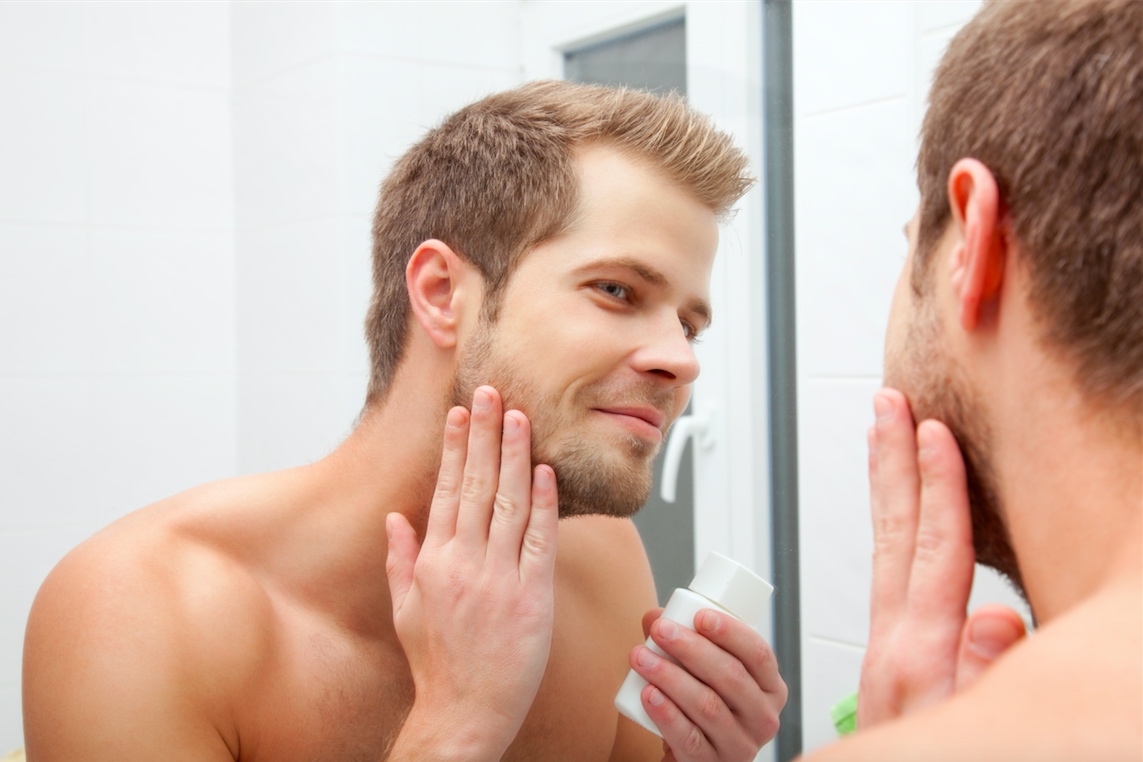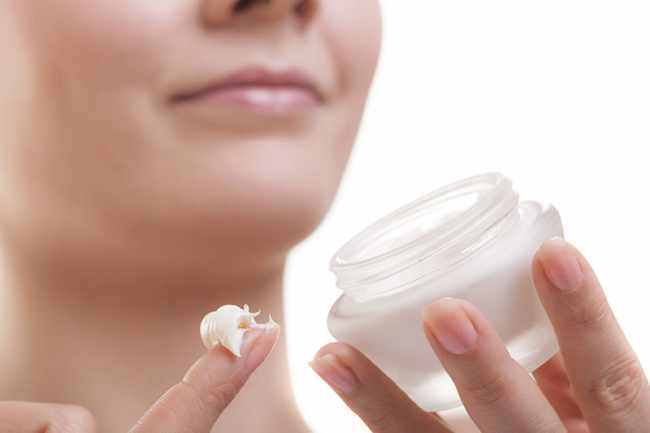Skincare Market Research | Beauty Industry Consulting

With many products flooding the shelves and an ever-evolving consumer landscape, skincare market research becomes the compass guiding businesses toward success.
As consumers become increasingly discerning and conscious of their skincare choices, businesses must navigate several factors to meet evolving demands and maintain competitiveness. That’s why skincare market research emerges as a vital tool for understanding consumer behavior, market trends, and competitive dynamics. It empowers skincare businesses to make informed decisions and seize growth opportunities.
What is Skincare Market Research?
Skincare market research evaluates consumer attitudes and opinions, sensory interaction, look and feel, product effectiveness, product usability, and brand appeal of skincare products. It includes moisturizers, face cleansers, sunscreens, masks, anti-aging serums, and more.
Through comprehensive analysis and data-driven insights, skincare market research aims to provide businesses with a strategic roadmap for product development, marketing strategies, and brand positioning within the skincare ecosystem.
Why Do Businesses Need Skincare Market Research?
Skincare market research enables businesses to gain deep insights into consumer preferences, needs, and purchase behaviors. Businesses can then tailor their product offerings, marketing messages, and customer experiences to resonate effectively with their target audience.
Moreover, skincare market research gives businesses valuable competitive intelligence, allowing them to identify competitive threats, capitalize on market gaps, and differentiate their brand effectively.
This market research also helps businesses uncover untapped market segments, emerging trends, and niche opportunities for growth. By identifying white spaces in the market and understanding evolving consumer needs, businesses can innovate their product offerings, expand into new markets, and capitalize on lucrative growth opportunities.
However, it brings many other benefits for businesses, including:
- Competitive Intelligence: Through competitive analysis, skincare market research helps businesses stay informed about their competitors’ strategies, product innovations, and market positioning.
- Product Development Guidance: Market analysis guides businesses throughout the product development lifecycle, from concept ideation to formulation and packaging.
- Market Expansion Opportunities: Skincare market research identifies opportunities for expansion and diversification, enabling businesses to explore new geographic markets, distribution channels, and product categories.
- Risk Mitigation: This market research helps businesses mitigate product launch risks, market expansion, and strategic investments.
When to Conduct Skincare Market Research

Timing is crucial when it comes to conducting skincare market research, and here are some critical considerations for determining when to conduct research:
- Product Development Stage: Skincare market research should start during product development to gather insights into product formulation, packaging, and positioning. By understanding consumer preferences, market trends, and competitive landscapes early in development, businesses can tailor their product offerings to effectively meet market demands.
- Pre-Launch Preparation: Before launching a new skincare product or entering a new market segment, businesses should conduct thorough market research to assess market readiness, identify potential barriers to entry, and refine their marketing strategies. This pre-launch research helps companies to anticipate market dynamics, validate product concepts, and optimize launch plans to maximize success.
- Market Expansion Initiatives: Skincare market research is essential when embarking on market expansion initiatives, such as entering new geographic markets or expanding product lines. By conducting market assessments and feasibility studies, businesses can evaluate market opportunities, assess competitive landscapes, and identify the most viable expansion strategies.
Questions to Ask Before Conducting Skincare Market Research
Before embarking on skincare market research initiatives, asking the right questions is essential to ensure that research efforts are focused and yield actionable insights. Here are vital questions to consider:
• Target Audience Identification:
Who are the target consumers for the skincare products or services being researched? What are their demographics, lifestyle preferences, and skincare concerns? Understanding the target audience’s profile is crucial for designing research methodologies and tailoring data collection efforts to effectively reach the right respondents.
• Research Objectives Clarification:
What specific objectives do we aim to achieve through skincare market research? Clearly defining research objectives helps align research efforts with business goals and ensures that research outcomes are actionable and impactful.
• Methodology Selection:
Which research methodologies are most suitable for addressing our research objectives and reaching our target audience? The correct research methods are essential for obtaining reliable and relevant data insights.
• Data Collection Plan:
How will data be collected, and what measures will be taken to ensure data quality and validity? Establishing a robust data collection plan involves defining sampling techniques, survey instruments, data collection timelines, and quality assurance protocols to minimize biases and errors in data collection and analysis.
• Budget Allocation:
What budget is available for skincare market research, and how will it be allocated across research activities? Comprehensive market research requires adequate financial resources to cover research design, data collection, analysis, and reporting expenses.
Leading Players in the Skincare Market
Numerous players, including global corporations, niche brands, and emerging startups characterize the skincare market. Here are some of the leading players in the skincare market:
- L’Oréal: As one of the world’s largest cosmetics companies, L’Oréal has a significant presence in the skincare market with brands like L’Oréal Paris, Lancôme, Kiehl’s, and Garnier. L’Oréal offers various skincare products catering to multiple skin types and concerns.
- Johnson & Johnson: With brands like Neutrogena, Aveeno, and Clean & Clear, Johnson & Johnson is a significant player in the skincare market. The company’s skincare portfolio includes products for acne treatment, anti-aging, moisturizing, and sun protection.
- Procter & Gamble: P&G owns several skincare brands, including Olay, SK-II, and Gillette. Olay, in particular, is known for its extensive range of skincare products targeting different age groups and skin concerns.
- Unilever: Unilever’s skincare portfolio includes brands like Dove, Vaseline, and Simple. Dove, known for its gentle and moisturizing formulations, is a leading brand in the skincare market, offering body care, facial care, and hand care products.
- Estée Lauder: Estée Lauder is renowned for its luxury skincare brands, including Estée Lauder, Clinique, and La Mer. These brands offer premium skincare products with advanced formulations and innovative ingredients.
- Neutrogena: Neutrogena, a subsidiary of Johnson & Johnson, is a well-known skincare brand offering a wide range of dermatologist-recommended products. The brand includes cleansers, moisturizers, acne treatments, and sunscreens.
Regional Insights

The skincare market exhibits varying trends and dynamics across different regions worldwide. Regional insights provide valuable information about consumer preferences, market trends, regulatory landscapes, and competitive dynamics. Here are some critical regional insights in the skincare market:
• Asia-Pacific (APAC): The APAC region significantly contributes to the global skincare market, driven by the growing beauty consciousness, increasing disposable incomes, and the influence of K-beauty and J-beauty trends. Countries like South Korea, Japan, China, and India are significant markets for skincare products, with a strong demand for innovative formulations, natural ingredients, and advanced skincare technologies.
• North America: The North American skincare market is characterized by a high level of product innovation, strong consumer awareness about skincare ingredients, and the presence of leading brands and retailers. Trends such as clean beauty, anti-aging skincare, and inclusivity drive market growth in the region.
• Europe: Europe represents a mature skincare market focusing on premium and natural products. Countries like France, Germany, the UK, and Italy are vital markets for skincare, with consumers seeking practical and sustainable skincare solutions. The region is also witnessing the rise of clean beauty and eco-friendly skincare brands, driven by increasing consumer environmental awareness.
• Latin America: Latin America is an emerging market for skincare products, fueled by rising disposable incomes, urbanization, and a growing beauty culture. Countries like Brazil, Mexico, and Argentina significantly contribute to the region’s skincare market. Trends such as sun protection, anti-pollution skincare, and multi-functional products are gaining popularity among Latin American consumers.
What are the Largest-Growing Segments?
In the dynamic skincare market, certain segments experience rapid growth and demand due to shifting consumer preferences, technological advancements, and emerging trends. Identifying these largest-growing segments is crucial for businesses to capitalize on market opportunities and stay competitive. Here are some of the largest-growing segments in the skincare market:
- Natural and Organic Skincare: With increasing consumer awareness about the potential risks of synthetic ingredients and a growing preference for clean and sustainable beauty products, the natural and organic skincare segment has witnessed significant growth. Consumers seek products formulated with plant-based ingredients, botanical extracts, and eco-friendly packaging.
- Anti-Pollution Skincare: As urbanization and environmental pollution continue to rise globally, there is a growing demand for skincare products designed to protect the skin from environmental aggressors such as air pollution, UV radiation, and blue light from electronic devices. Anti-pollution skincare formulations often contain antioxidants, protective barriers, and detoxifying ingredients to shield the skin from harmful environmental stressors.
- CBD-infused Skincare: Using cannabidiol (CBD) in skincare products has emerged as a prominent trend, driven by CBD’s purported anti-inflammatory, antioxidant, and calming properties. CBD-infused skincare products, including serums, creams, and masks, target skin concerns such as acne, inflammation, and dryness. As regulatory barriers surrounding CBD gradually loosen in many regions, the CBD skincare segment is experiencing rapid growth and innovation.
- Men’s Grooming and Skincare: The men’s skincare and grooming segment continues to expand as men become more invested in their personal care routines. Brands are introducing specialized skincare products for men, including cleansers, moisturizers, and anti-aging treatments formulated to address male consumers’ specific needs and preferences.
- Hybrid Skincare Products: Hybrid skincare products that combine multiple benefits into one formula, such as moisturizers with SPF, serum-infused masks, and toners with exfoliating properties, are gaining popularity among consumers seeking convenience and efficiency in their skincare routines. These multifunctional products offer time-saving solutions, catering to busy lifestyles without compromising efficacy.
Market Drivers
In the skincare industry, several market drivers contribute to the growth and evolution of the market landscape, shaping consumer behavior, industry trends, and business strategies. Understanding these drivers is essential for businesses to identify opportunities, mitigate risks, and stay competitive. Here are some key market drivers in the skincare industry:
Increasing Beauty Consciousness: People are more aware of skincare trends, techniques, and products, leading to a higher demand for innovative and effective solutions. This heightened beauty consciousness drives the adoption of skincare products across various demographics.
Aging Population: The global population is aging rapidly, with many elderly individuals seeking skincare products to address age-related concerns such as wrinkles, sagging skin, and age spots. The aging population represents a lucrative market for anti-aging skincare products and treatments, fueling innovation and investment in this segment.
Technological Advancements: Advances in skincare technology, including ingredients, formulations, delivery systems, and devices, drive innovation and product development in the industry. Technologies such as nanotechnology, microencapsulation, and bioengineering enable the creation of skincare products with enhanced efficacy, safety, and precision.
Health and Wellness Trends: The growing emphasis on health, wellness, and self-care has influenced consumer preferences in skincare. Consumers seek skincare products formulated with natural, organic, and clean ingredients, free from harmful chemicals and additives.
Cultural Diversity and Inclusivity: Skincare brands embrace cultural diversity and inclusivity by offering products tailored to diverse skin types, tones, and ethnicities. Catering to multicultural consumers with diverse skincare needs and preferences fosters brand loyalty and market expansion.
Market Restraints

While the skincare industry presents numerous growth opportunities, it also faces specific challenges and market restraints that businesses must navigate effectively to sustain success. Here are some key market restraints in the skincare industry:
Regulatory Compliance: Compliance with regulations such as the FDA’s Cosmetic Act, the EU Cosmetics Regulation, and various international standards imposes significant challenges for skincare companies and small and medium-sized enterprises (SMEs).
Intense Competition: Intense competition exerts pressure on pricing, product differentiation, and brand positioning, making it challenging for businesses to stand out in a crowded marketplace. Moreover, the proliferation of counterfeit skincare products and unauthorized sellers undermines brand integrity and consumer trust, posing additional challenges for legitimate skincare companies.
Environmental Concerns and Sustainability: The skincare industry faces growing scrutiny over its environmental impact, including carbon emissions, plastic pollution, and deforestation associated with palm oil production. Consumers increasingly prioritize environmentally friendly and sustainable skincare products, driving demand for eco-friendly packaging, biodegradable formulations, and cruelty-free practices.
Economic Uncertainty: Economic downturns, currency fluctuations, and geopolitical instability can affect consumer spending behavior and purchasing power in the skincare market. Economic uncertainty may lead consumers to prioritize essential expenses over discretionary purchases, reducing demand for premium skincare products and luxury treatments.
Examples of our work
Our most recent work in skincare research includes In-Home Product Testing for a new personal skincare analysis app, evaluating a skincare brand website, and gaining consumer insights with sensory testing methods.
In the past, we have helped a global skincare retailer’s NYC flagship store increase sales by 25% year-on-year by redesigning storefront displays and improving the in-store shopper experience.
In Los Angeles, we recruited teams of cosmetic artists to facilitate demonstrations for consumers.
We have even helped an up-and-coming skincare brand streamline its website design and online checkout process to increase its sales!
- Experienced and friendly staff who are educated and knowledgeable in your industry, bilingual, and understand your market
- Access to a diverse, multicultural, multi-ethnic consumer base in major metropolitan areas on the front lines of trend-setting and product innovation
- Efficient and cost-effective fieldwork specific to your industry and customized for the insights you need to grow your business
- Years of experience and an impressive resume in skincare research and the health and beauty industries
What Makes SIS International Research the Top Market Research Firm in Skincare Market?
In the competitive skincare world, SIS International provides strategic, data-driven insights tailored to industry trends and consumer preferences. By offering a comprehensive understanding of the skincare market, we empower brands to innovate and succeed. Here’s why SIS International is the top choice for skincare market research:
1. Specialized Knowledge of Skincare Trends
SIS International delivers deep expertise in tracking skincare trends, from clean beauty and anti-aging solutions to innovative ingredients like peptides and probiotics. This knowledge helps our clients stay ahead in a market driven by rapid shifts and high consumer expectations.
2. Customized Consumer Insights
We prioritize consumer-centric research, offering unique insights into skincare preferences, such as ingredient awareness, purchasing behaviors, and loyalty factors. By understanding what resonates most with different demographics, SIS International equips brands with precise data to craft targeted marketing strategies.
3. Expertise in Regulatory Compliance
Navigating skincare regulations requires precise understanding, especially with increasing scrutiny over ingredient transparency and product claims. Our team’s expertise ensures clients remain compliant with regulatory standards globally, from the FDA to EU cosmetic regulations, minimizing compliance risks and protecting brand reputation.
4. Innovation-Driven Research
With skincare innovation constantly evolving, SIS provides insights into emerging technologies, including microbiome skincare, sustainable packaging, and non-invasive anti-aging treatments. This innovation-focused approach helps brands tap into promising product opportunities and remain relevant in a crowded market.
5. Global Reach with Localized Insights
Our extensive global presence means we understand local market dynamics and regional skincare preferences. From Asia’s preference for brightening products to North America’s focus on clean and natural skincare, SIS International provides brands with targeted, region-specific insights essential for successful market expansion.
6. Competitor and Market Landscape Analysis
We provide a detailed analysis of the competitive skincare landscape, examining key players, strategies, and growth patterns. This helps clients identify gaps in the market and strategically position themselves to capture market share, offering a clear advantage over competitors.
7. Trusted Partner for Leading Skincare Brands
As a reputable partner to top skincare brands worldwide, SIS is known for delivering reliable, high-quality research. Our clients value our commitment to excellence and our focus on actionable insights that drive growth and brand loyalty.
About SIS Skincare Market Research
With over 40+ years of experience in Beauty Market Research, SIS has developed a strong background in Cosmetic, Fragrance, and Skincare Market Research. SIS has helped major retailers, cosmetic artists, healthcare providers, and product developers to:
- Develop products and services
- Stimulate business growth
- Increase profits
- Understand customer needs and wants
- Improve in-store experience
With access to the most influential and trend-setting consumer segments in the U.S., our skilled research professionals and recruiters conduct Qualitative Fieldwork and Quantitative Data Collection studies. We conduct Consumer New Product and Concept Testing, Sensory Research, In-Home Usability Testing (IHUT), in-store research and Message Testing. We can target consumer segments with various skin types, age groups, and skincare concerns.


